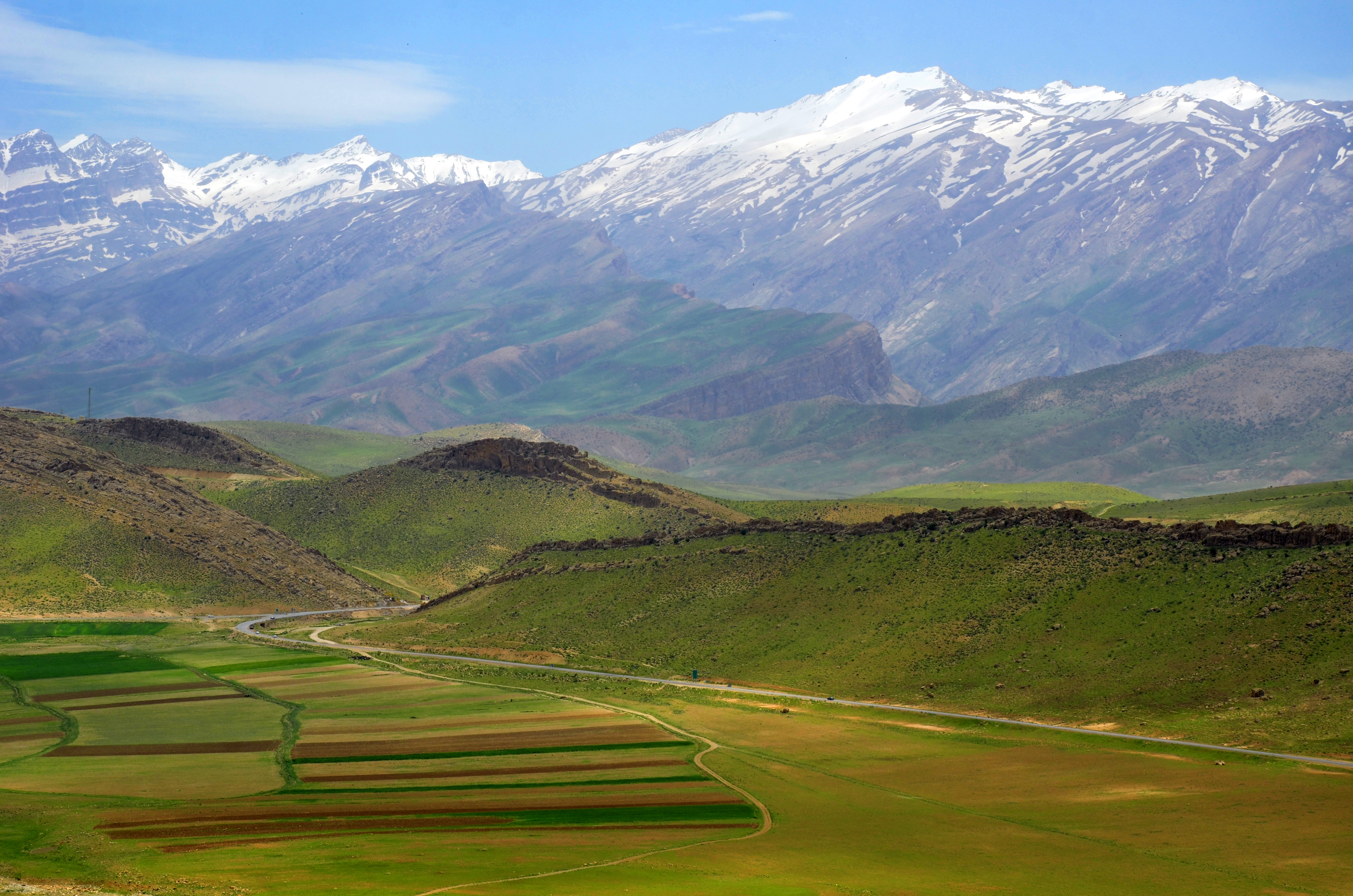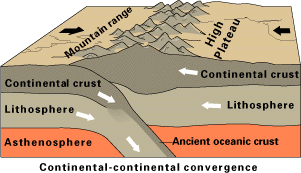|
2017 Iran–Iraq Earthquake
On 12 November 2017 at 18:18 UTC (21:48 Iran Standard Time, 21:18 Arabia Standard Time), an earthquake with a moment magnitude of 7.4 occurred on the Iran–Iraq border, with the Iraqi Kurdish city of Halabja, and the Kurdish dominated places of Ezgeleh, Salas-e Babajani County, Kermanshah province in Iran, closest to the epicentre, south of the city of Halabja, Iraqi Kurdistan. It was felt as far away as Israel and the United Arab Emirates. With at least 630 people killed (mostly in Iraq's Kurdish Halabja area and the Iranian Kurdish dominated province of Kermanshah), more than 8,100 injured, and many more unaccounted for, it was the deadliest earthquake of 2017. Tectonic setting The earthquake was located within the Zagros fold and thrust belt, part of the broad and complex zone of continental collision between the Arabian and Eurasian plates. At this location, the relative convergence of the plates is about 26 mm per year. The convergence is quite oblique to ... [...More Info...] [...Related Items...] OR: [Wikipedia] [Google] [Baidu] |
Kermanshah
Kermanshah is a city in the Central District (Kermanshah County), Central District of Kermanshah province, Kermanshah province, Iran, serving as capital of the province, the county, and the district. The city is from Tehran in the western part of the country. The 2016 Census, National Census measured the population of the city as 946,651 (2025 estimate 1,117,000). Etymology "Kermanshah" derives from the Sasanian Empire, Sasanian-era title ''Kirmanshah'', which translates as "King of Kerman". This title was held by the son of Shapur III, Prince Bahram, who was bestowed with the title upon being appointed governor of the province of Kirman (Sasanian province), Kirman (present-day Kerman Province). Later, in 390, when he had already succeeded his father as Bahram IV, Bahram IV Kirmanshah (388–399), he founded the city and his title was applied to it, i.e. "(City of the) King of Kirman". History Prehistory Because of its antiquity, attractive landscapes, rich culture and Ne ... [...More Info...] [...Related Items...] OR: [Wikipedia] [Google] [Baidu] |
Halabja
Halabja (, ) is a city in the Kurdistan Region of Iraq and the capital of Halabja Governorate, located about northeast of Baghdad and from the Iranian border. The city lies at the base of what is often referred to as the greater Hewraman region stretching across the Iran–Iraq border. Halabja is surrounded by Hawraman and Shnrwe range in the northeast, Balambo range in the south and Sirwan river in the west. The Kurds in the city of Halabja generally speak only the Sorani dialect of Kurdish, but some residents of the surrounding villages speak the Gorani dialect. History Early history The history of Halabja is believed to have started during the Akkadian Empire period (24th century BC). The ancient city-kingdom of Lullubi from that period is thought to be located in Halabja area. The excavations at nearby archaeological sites like Bakr Awa revealed a long history. The cemetery there includes the tombs of several historical figures, such as Ahmed Mukhtar Jaff, Tayar Bag ... [...More Info...] [...Related Items...] OR: [Wikipedia] [Google] [Baidu] |
2017 Iran–Iraq Earthquake
On 12 November 2017 at 18:18 UTC (21:48 Iran Standard Time, 21:18 Arabia Standard Time), an earthquake with a moment magnitude of 7.4 occurred on the Iran–Iraq border, with the Iraqi Kurdish city of Halabja, and the Kurdish dominated places of Ezgeleh, Salas-e Babajani County, Kermanshah province in Iran, closest to the epicentre, south of the city of Halabja, Iraqi Kurdistan. It was felt as far away as Israel and the United Arab Emirates. With at least 630 people killed (mostly in Iraq's Kurdish Halabja area and the Iranian Kurdish dominated province of Kermanshah), more than 8,100 injured, and many more unaccounted for, it was the deadliest earthquake of 2017. Tectonic setting The earthquake was located within the Zagros fold and thrust belt, part of the broad and complex zone of continental collision between the Arabian and Eurasian plates. At this location, the relative convergence of the plates is about 26 mm per year. The convergence is quite oblique to ... [...More Info...] [...Related Items...] OR: [Wikipedia] [Google] [Baidu] |
2017 Kermanshah Earthquake By Farzad Menati - Sarpol-e Zahab (56)
Seventeen or 17 may refer to: *17 (number) * One of the years 17 BC, AD 17, 1917, 2017, 2117 Science * Chlorine, a halogen in the periodic table * 17 Thetis, an asteroid in the asteroid belt Literature Magazines * ''Seventeen'' (American magazine), an American magazine * ''Seventeen'' (Japanese magazine), a Japanese magazine Novels * ''Seventeen'' (Tarkington novel), a 1916 novel by Booth Tarkington *''Seventeen'' (''Sebuntiin''), a 1961 novel by Kenzaburō Ōe *'' Seventeen'' (''Kuraimāzu hai''), a 2003 novel by Hideo Yokoyama * ''Seventeen'' (Serafin novel), a 2004 novel by Shan Serafin Stage and screen Film * ''Seventeen'' (1916 film), an American silent comedy film *''Number Seventeen'', a 1932 film directed by Alfred Hitchcock * ''Seventeen'' (1940 film), an American comedy film *''Stalag 17'', an American war film *''Eric Soya's '17''' (Danish: ''Sytten''), a 1965 Danish comedy film * ''Seventeen'' (1985 film), a documentary film * ''17 Again'', a 2009 film whose work ... [...More Info...] [...Related Items...] OR: [Wikipedia] [Google] [Baidu] |
Zagros Mountains
The Zagros Mountains are a mountain range in Iran, northern Iraq, and southeastern Turkey. The mountain range has a total length of . The Zagros range begins in northwestern Iran and roughly follows Iran's western border while covering much of southeastern Turkey and northeastern Iraq. From this border region, the range continues southeast to the waters of the Persian Gulf. It spans the southern parts of the Armenian highlands, and the whole length of the western and southwestern Iranian plateau, ending at the Strait of Hormuz. The highest point is Mount Dena, at . Geology The Zagros fold and thrust belt was mainly formed by the collision of two tectonic plates, the Eurasian Plate and the Arabian Plate. This collision mainly happened during the Miocene (about 25–5 mya or million years ago) and folded the entirety of the rocks that had been deposited from the Paleozoic (541–242 mya) to the Cenozoic (66 mya – present) in the passive continental margin on the Ar ... [...More Info...] [...Related Items...] OR: [Wikipedia] [Google] [Baidu] |
Main Recent Fault
Main may refer to: Geography *Main River (other), multiple rivers with the same name *Ma'in, an ancient kingdom in modern-day Yemen *Main, Iran, a village in Fars Province *Spanish Main, the Caribbean coasts of mainland Spanish territories in the 16th and 17th centuries *''The Main'', the diverse core running through Montreal, Quebec, Canada, also separating the Two Solitudes *Main (lunar crater), located near the north pole of the Moon *Main (Martian crater) People and organizations *Main (surname), a list of people with this family name *Main, alternate spelling for the Minaeans, an ancient people of modern-day Yemen *Main (band), a British ambient band formed in 1991 *Chas. T. Main, an American engineering and hydroelectric company founded in 1893 *MAIN (Mountain Area Information Network), former operator of WPVM-LP (MAIN-FM) in Asheville, North Carolina, U.S. *Main Deli Steak House ("The Main"), a smoked-meat delicatessen in Montreal, Quebec, Canada Ships * ''Ma ... [...More Info...] [...Related Items...] OR: [Wikipedia] [Google] [Baidu] |
Fault (geology)
In geology, a fault is a Fracture (geology), planar fracture or discontinuity in a volume of Rock (geology), rock across which there has been significant displacement as a result of rock-mass movements. Large faults within Earth's crust (geology), crust result from the action of Plate tectonics, plate tectonic forces, with the largest forming the boundaries between the plates, such as the megathrust faults of subduction, subduction zones or transform faults. Energy release associated with rapid movement on active faults is the cause of most earthquakes. Faults may also displace slowly, by aseismic creep. A ''fault plane'' is the Plane (geometry), plane that represents the fracture surface of a fault. A ''fault trace'' or ''fault line'' is a place where the fault can be seen or mapped on the surface. A fault trace is also the line commonly plotted on geological maps to represent a fault. A ''fault zone'' is a cluster of parallel faults. However, the term is also used for the zone ... [...More Info...] [...Related Items...] OR: [Wikipedia] [Google] [Baidu] |
Continental Collision
In geology, continental collision is a phenomenon of plate tectonics that occurs at Convergent boundary, convergent boundaries. Continental collision is a variation on the fundamental process of subduction, whereby the subduction zone is destroyed, mountains produced, and two continents sutured together. Continental collision is only known to occur on Earth. Continental collision is not an instantaneous event, but may take several tens of millions of years before the Geologic fault, faulting and Fold (geology), folding caused by collisions stops. Geology of the Himalaya, The collision between Indian plate, India and Eurasian plate, Asia has been going on for about 50 million years already and shows no signs of abating. Collision between East and West Gondwana to form the East African Orogeny, East African Orogen took about 100 million years from beginning (610 Ma) to end (510 Ma). The collision between Gondwana and Laurasia to form Pangea occurred in a relati ... [...More Info...] [...Related Items...] OR: [Wikipedia] [Google] [Baidu] |



